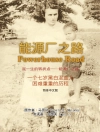Because he was so shy of publicity, little is known about J. J. Leahy. He
was called by some as the back-country baron, one of Australias most
important early pastoralists. With a limited education and no money, he
went on to build up a large pastoral empire. He owned or leased over one
hundred extensive properties, and at one time, his wool clip was said to be
the largest in Australia. He also ran sixty thousand head of cattle on these
properties. His numerous big deals became legendary. His bank never
required a mortgage over his assets to ??inance his big stock deals. All he
needed to do was call his bank manager to let him know he was writing a
cheque to cover his latest deal. He travelled ??irst by horse-drawn vehicles
and then cars and ??inally was a pioneer in the use of aircraft to cover his
area of interest, starting with a converted WWI Bristol ??ighter. At times he
controlled one hundred thousand sheep walking on stock routes, besides
those run on his large properties. On his travels, he often bought a large
mob of sheep with a handshake. He was offered but refused a knighthood.
Giới thiệu về tác giả
Gerard Leahy is the youngest of J. J. Leahy’s nine children. He was born in 1930 and was educated at St. Ignatius College, Riverview, in Sydney. He worked for a year in the International Harvester tractor factory at Geelong in Victoria. After a year’s jackerooing on his father’s property Oban in western Queensland, out from Mt. Isa, he spent all his working and family life on Burra Station near Tumbarumba, on the western slopes of the Snowy Mountains in New South Wales. He was involved in broad and many sporting and community activities in the Tumbarumba district. After selling his property, he moved to the Blue Mountains, west of Sydney.












